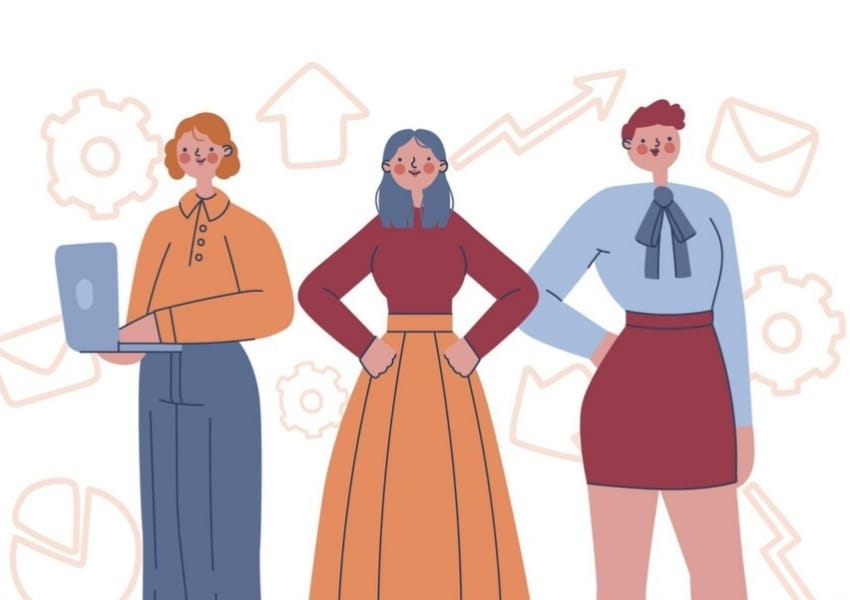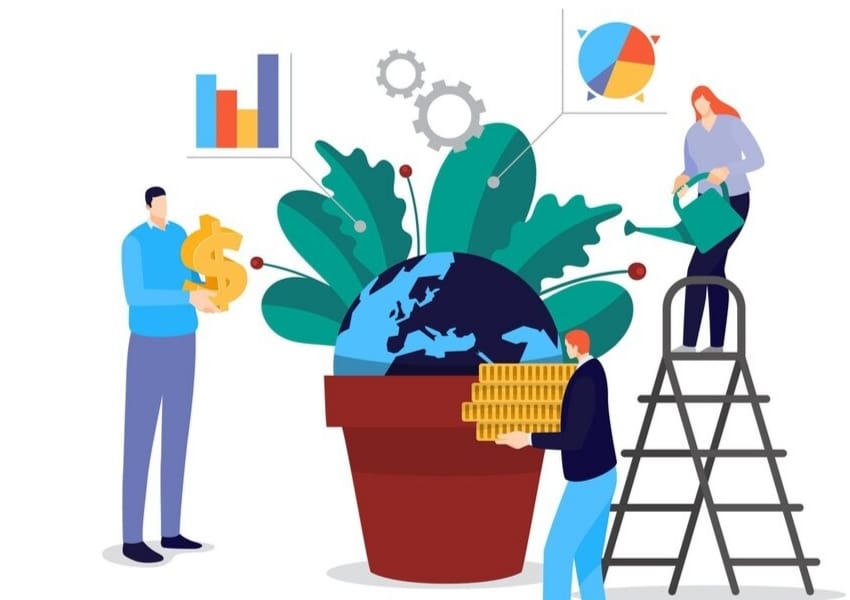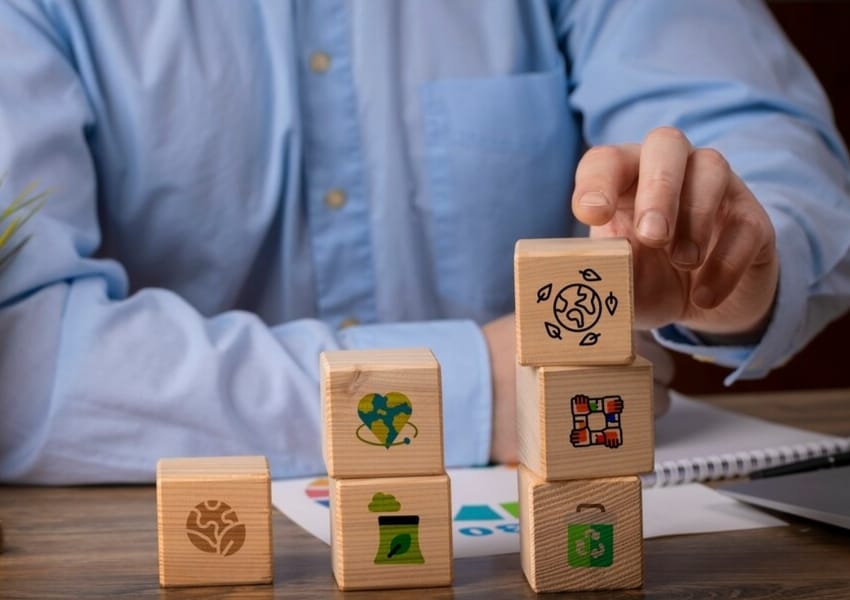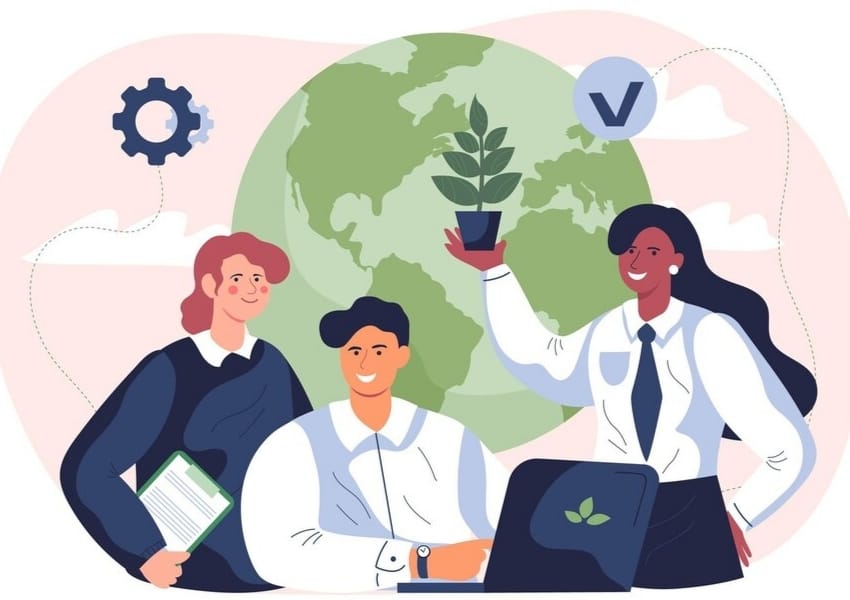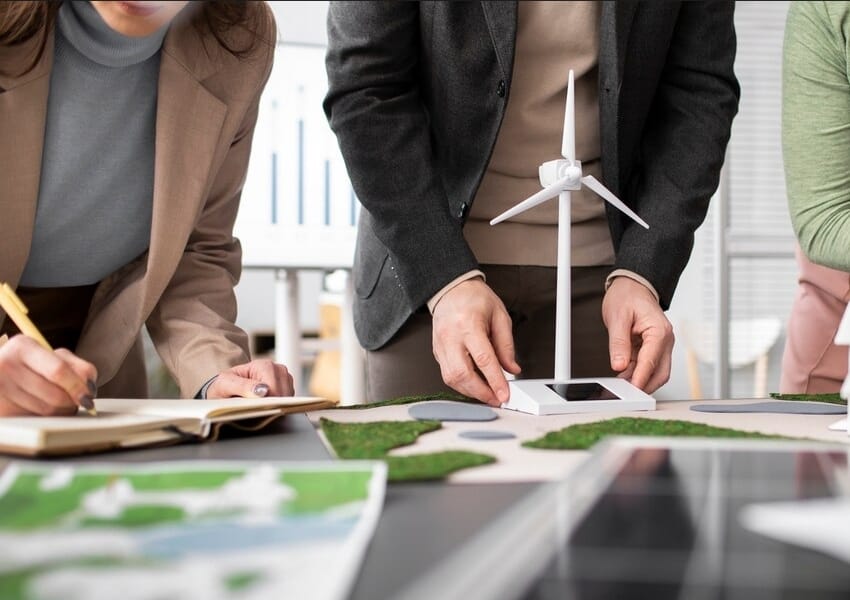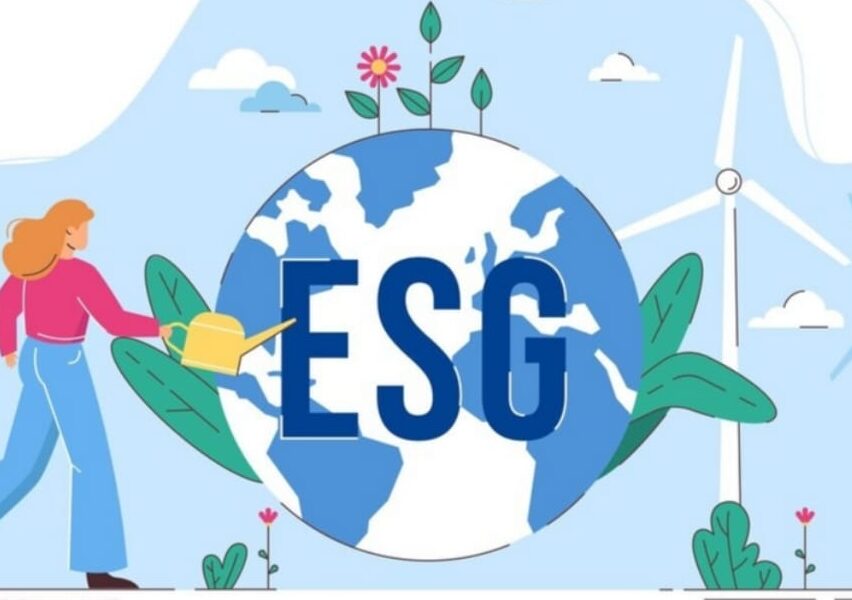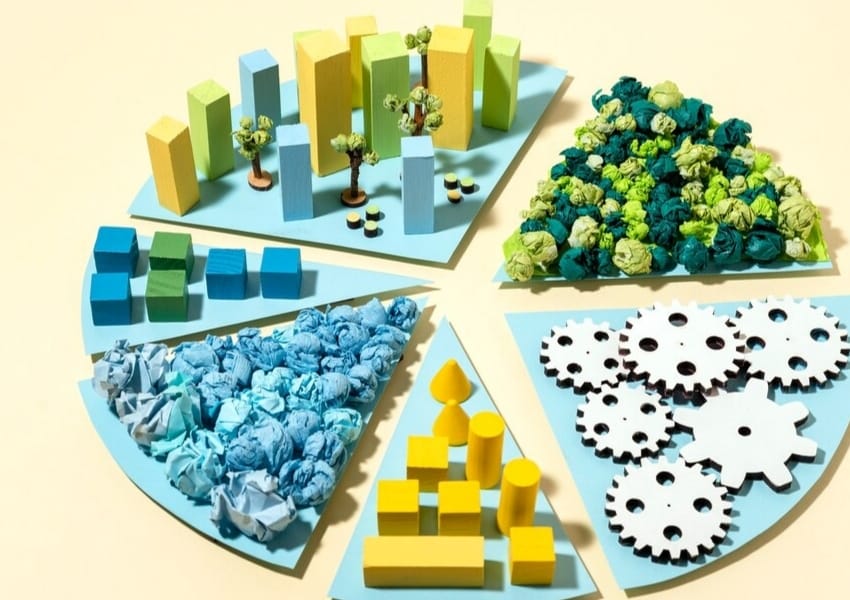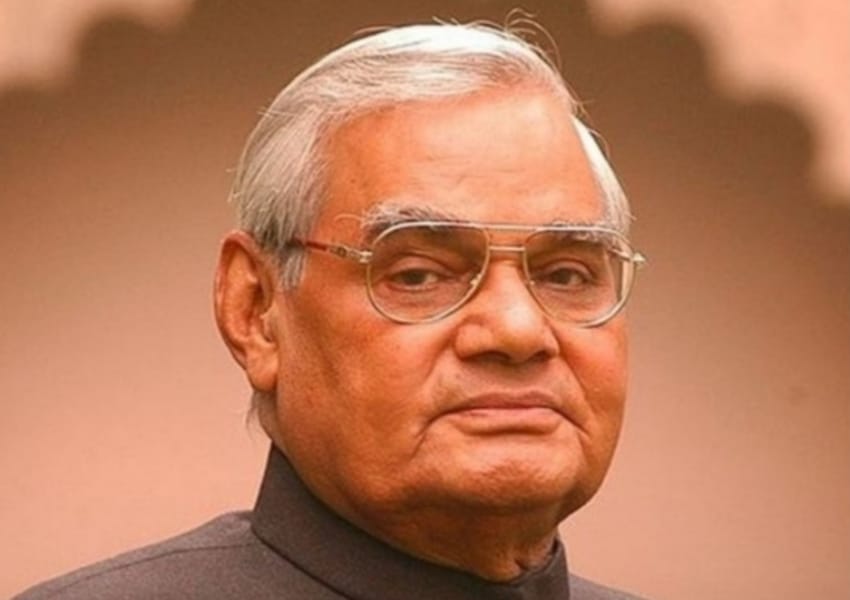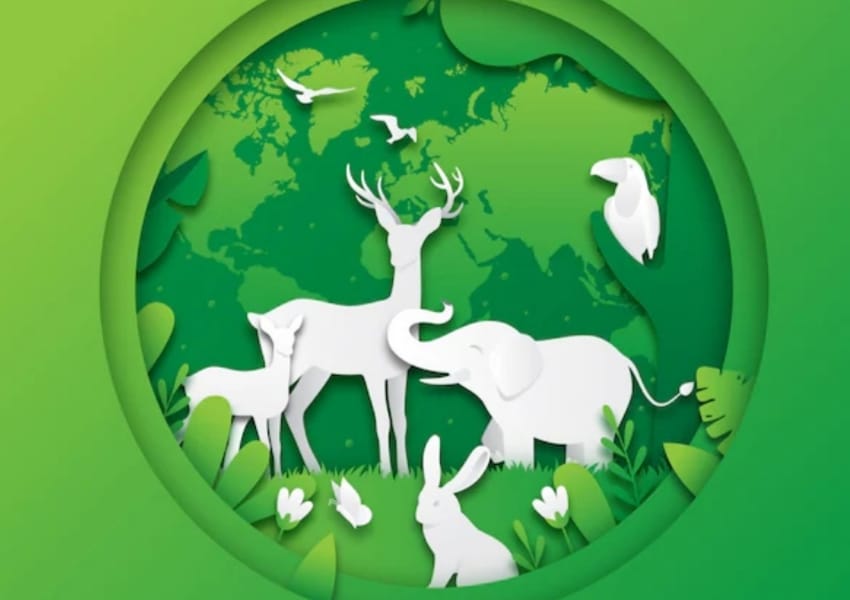Desi Toymakers Go Green to Script New Toy Story
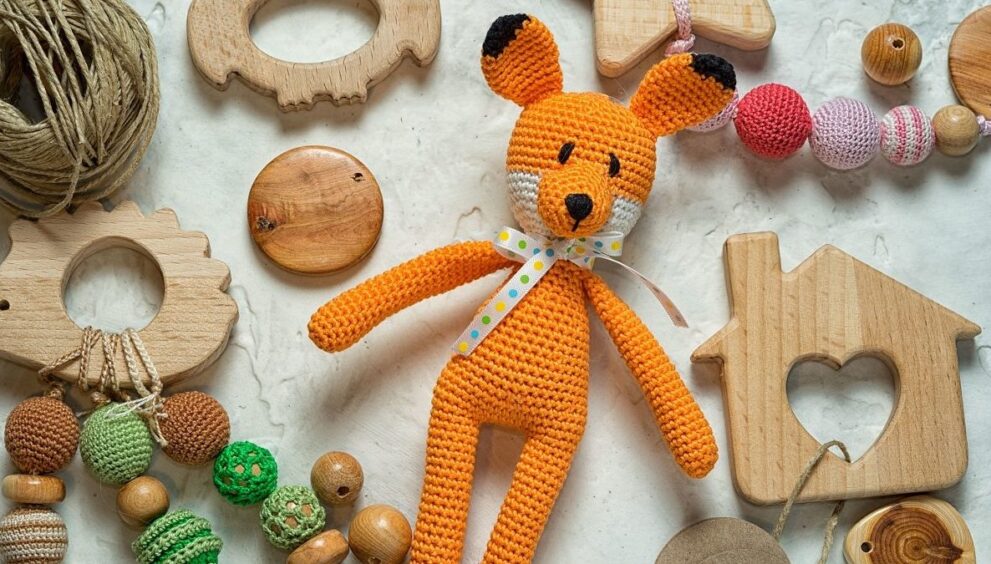
The toy industry is taking sustainable initiatives to make eco-friendly toy sets and merchandise for kids to allow them to learn amid fun, creativity and security. This, in turn, could restrict plastic pollution to an extent.
Four-year-old Aarav’s environmentally-conscious parents chose a giraffe soft toy for him. The boy not only fell in love with his new friend but his parents also noticed a positive change in his play habits. The eco-friendly nature of the toy eliminated concerns about harmful chemicals, providing a safe and healthy play environment for Aarav. “The family embraced the idea of conscious consumerism, knowing that their purchase not only delighted their child but also supported artisans and sustainable practices,” recalls Dr. Shweta Gupta, director at Little Llama, a reputed toymaker with a creditable line of sustainable products.
Same goes for five-year old Zoya with a slight twist in her tale. The little girl yearns for grandma-narrated bedtime stories every night but she has none to lend an ear to. She fancies reaching the sky above and talking to the twinkling stars. But lo! She has no wings to fly or a fairy godmother to do that magic trick for her. Again, she loves to play board games with her daddy or rock the wooden horse with her friends at home.
Sadly enough, it’s just her luck that she sees no possibility in fulfilling any of these dreams even in the distant future. Lack of parental guidance, electronic intrusion and absence of quality family time leaves Zoya alone and depressed. Consequently, this makes her irritable and stressed out too! She longs for toys and playmates, which are like prized possessions in one’s infancy and every kid’s cupboard has a unique toy story to tell. However, tiny Zoya only has a heap of rough-edged plastic toys with high chemical-content dumped in one corner of her cramped room to fend for herself.
The above heartwarming stories are a handful of instances drawn from customer feedback recounting experiences before or after embracing an eco-friendly product.
Why Eco-Friendly?
With technical revolution followed the blitzkrieg of electronic gadgets and further, Internet explosion saw our lives being shifted from physical to the digital space. Desktops, laptops, tablets and mobile phones have occupied the better part of our mindzone over time. With tangible toys and playtime in the middle of verdant nature getting a new twist in the e-era (via video games, playstations and immersive environments), one wonders if the Gen-Z and their progeny would end up losing ties completely with the terra firma beneath their feet and those tactile tools of expression in a few years’ time. Seeing, touching and feeling while learning can be more fun and exciting. This bolsters a child’s confidence level and hones his/her cognitive skills as well.
Albeit leading toymakers have glutted the market with branded widgets, expensive dolls and dollhouses, action hero/heroine figurines and metaverse games, queries can be raised over the issue of sustainability and zero waste. Attaching much importance to outdoor sporting activity and indoor physical games, many domestic toy manufacturers are logically generating a massive output of eco-friendly toys to offset the harmful impacts of chemicals and toxic elements on health as well as to curtail the screen time for kids.
Keeping this in mind, the toy industry is taking green initiatives to make environmentally-friendly products and toy sets for children to enable them to learn with enjoyment amid safety. This can also limit plastic pollution to a great degree.
Green Toy Space
The Indian green toy market size is valued at approximately $574 billion, growing at a rate of 5.87%, annually. In the United States, wooden toys as a percentage of the toy total market size currently stand at 20%. Nevertheless, it is predicted to surge to a whopping 50% within a period of five years. In India, a large part of the green toy market presently remains unorganised. But with a spurt of new entrants on the block, the sector will likely see a disproportionate spike in the coming years.
Overall Market Milieu
The toy industry in India had touched US$ 1.5 billion in 2022, backed by Research and Markets statistics, while the global market stands at US$ 183.0 billion in 2023. The Indian toy market size is expected to reach US$ 3.0 billion by 2028, seeing a CAGR of 12.25% during the 2022-2028 forecast period. As per Statista, revenue in the toys and games market amounts to US$ 1,623.00 million in 2023. The same is anticipated to witness a 5.11% CAGR over a span of six years from 2023 to 2028.
The worldwide market value is said to be US$ 1.2 billion, exhibiting a CAGR of 12.36%. The domestic toy market contributes less than 1% of the global toy industry.
The value of sustainable toy industry on the global map is calculated at approximately $18.94 billion in 2020 and is projected to rise to about $59.64 billion by 2030, registering a CAGR of 12.5%.
Isha Gopal, founder of Bloon Toys, reports that “the homegrown toy market size is roughly pegged at INR 12,000 Cr at present, reflecting a CAGR of 12%. It is envisioned to achieve a bloating figure by 2030, becoming an industry worth INR 30,000 Cr. Though in the United States, the toy manufacturers’ domain magnifies to almost 25 times (at INR 3,00,000 Cr) the size of the Indian toy territory, the former is growing only at 4%.”
In the Lap of Mother Nature
The desi toybrands are taking the eco-friendly route with a product pipeline that is biodegradable and devoid of toxic elements.
“We increasingly focus on environmentally-friendly items, emphasizing on non-toxic elements,” states Dr. Gupta. Growth manager Vasanth Tamilselvan of Ariro Toys, another leading toybrand of eco-friendly kids’ merchandise, reminds that “most brands are consciously walking the talk as the Bureau of Indian Standards (BIS) has been vigilant about their sustainability claims of late.” For the uninitiated, the BIS certification in India guarantees any product’s quality, reliability and safety to its customers.
Gopal agrees that “traditional toys like Channapatna that are eco-friendly and non-toxic have been around for years now. On the flip side, there are emerging new modern brands that are making a visible difference in choosing their raw materials responsibly to keep pace with today’s times, participate in urgent climate actions and address children’s ‘play’ needs for their all-round development. That is why it is so important to pick sustainably sourced natural ingredients that are both earth and child-friendly with suitable designs.”
For the unversed, Channapatna toys are colourfully eye-pleasing, retentive of ethnic culture and are eco-conscious in their make. Usually made out of ivory wood derived from forests and painted with vegetable dyes, Channapatna dolls are a kind of famous wooden toys anufactured in the simple town of Channapatna in the Ramanagara district of the Karnataka province.
Indian brands, namely B4Brain, Shumee, Ariro Toys and Curious Cub among others are offering safe, engaging and sustainable toys for kids to highlight their eco-friendly endeavours. “These companies concentrate on generating a green output that is clean, engaging and environmentally-compatible, thereby incorporating sustainable practices in their manufacturing processes,” concedes Dr. Ahamed Shafi E P, co-founder and R&D head of B4Brain Labs, which deals in developmental toys to nurture both physical and mental growth of babies.
Earthy Medium
Harping on the essential bonding between kids and their concrete surroundings or the Mother Nature, desi toy labels like Shumee Toys, Bloon Toys, Toyroom, Ariro Toys, Curious Cub, Eduspark Toys, GiggleGlory.com, Mama, Naturally, Desi Toys are looking for sustainable methods to rewrite the rules of children’s ‘play and learn’ curriculum. For they very well know and understand the significance of leveraging natural materials as in unpainted wood or organic textiles — such as bamboo fibers, cotton and linen — natural rubber, neem wood, felt fabric, hand-stitched toys or hemp to fashion their product menus and also to ensure early mental development of children within protective boundaries.
“See eco-friendly toys, particularly those made from natural materials are entirely safe for children along with the environment,” declares Gopal. Items like wood, wool, beeswax — finished using dyes made with natural, plant-based pigments or beeswax wood polish — are mouth-safe, warm and earthy and therefore, good for children to be around. “This works really well for open-ended play as well because children play best with such stuff on their own without the guidance of an adult. By buying such materials, the guardian or a caregiver is also okay with leaving their wards unsupervised because of the inherent safety of the objects involved,” she further attests.
“Green products in the toy industry often utilize materials such as organic cotton, bamboo and recycled plastics. Besides, wood, rubber and any cloth-based puppets and playthings can be categorized as sustainable toys,” lists Dr. Gupta.
Eco-friendly knickknacks are often made from materials like FSC (Forest Stewardship Council)-certified wood, medical-grade silicone, OEKO-TEX (the world’s best-known label for textile safety)-certified organic cotton and BPA(bisphenol A, an industrial chemical that has been used to make certain plastics and resins since the 1950s)-free or bio-based plastics. These are designed to be safe, non-toxic and environmentally-sustainable.
Materials that are durable, sustainably imported, biodegradable in nature, can be handed down to generation after generation and are conveniently used by a household for decades, much unlike the conventional concept of a ‘toy’ —can be broadly classified as nature-friendly products.
Preferable Age for Eco-Friendly Pick
Parents of children aged in the bracket of three to eight years are increasingly opting for environmentally-friendly toys. “Articles like our elephant named Mia and handcrafted fabric playsets are particularly popular in this age group. These toys not only tickle children’s imagination but also align with their parents’ inclination towards promoting a safe and sustainable play,” observes Dr. Gupta.
Ideally, the early childhood segment — belonging to the newborns to as old as about seven years — is tipped as the safest to resort to environmentally-friendly materials.
Retail Raid
In the retail sector, one wonders if malls and stores are racking up eco-friendly toys or are they still keeping leading brands’ plastic merchandise on their shelves in the kids’ section? “Major retail outlets are recognizing the shift in consumer predilections for eco-friendly options. Well-known brands’ products are gaining shelf space as retailers respond to the soaring demand for sustainable and ethical choices. While the flourishing brands’ plastic merchandise is still gracing the children’s units on shopping floors, the prominence of eco-friendly toys is but steadily rising,” enthuses Dr. Gupta.
On the flip side, Gopal exposes the scanty visibility of sustainable equipment and merchandise at the shopping plazas. “Most of the stock that you see at the retail centres is still very plastic,” she rues.
Strikingly enough, numerous reputed brands operate exclusively D2C (direct to consumer) and through their own websites. “They make up for the lack of their retail presence by offering manufacturing warrantees and fantastic customer support along with participating in a bunch of pop ups!” she reports.
Top-Line Status
Statista’s statistics reveal that in India, the toys and games market is estimated to clock revenues worth US$1,623 million in 2023. The same is envisioned to witness a CAGR of 5.11% during the 2023-2028 forecast period. On the international front, the United States stays ahead of the curve with an astronomical figure of US$38,510 million in the ongoing year. Good news is that India’s thriving middle class and fattening disposable income are spurring nationwide demand for educational toys and board games.
As an industry participant in the eco-friendly toy domain, Little Llama’s spokesperson confirms that the company achieved remarkable success with revenues reaching $1.5 million in its first operational year (2022-2023). “Steep demand for green toys has been our significant growth driver and we anticipate continued prosperity with greater awareness and appreciation for sustainable practices,” prays Dr. Gupta.
Circular Economy
Eco-friendly products are designed to be recycled or upcycled to make a key contribution to circular economy. “The wooden toys are especially long lasting and can be passed down to offspring for many years,” views Tamilselvan.
Initiatives like Terracycle’s (an innovative US-based recycling company that is reckoned as a global leader in reconditioning hard-to-recycle materials, which otherwise end up in trash, landfills and incinerator) Toy Zero Waste Box and Dagoma’s (3D printer company) Toy Emergency Room or the Toy Rescue project are gaining wide attention for addressing the short lifespan of toys, particularly those made from plastic.
“These awareness programs form a crucial part of the evolving circular economy in the toy industry, zeroing in on the recycling and upcycling efforts to reduce waste and expand the shelf life of toys,” chips in Dr. Shafi.
Vocal for Local
It is quite often contemplated whether handcrafted toys back home create an employment opportunity for local labourers like indigenous craftsmen and artisans instead of importing foreign raw materials or finished products. Can this also lower the price of toys as every child, irrespective of the social strata it belongs to, deserves to own a toy and play with it in his/her childhood phase?
“Our handcrafted toys create job opportunities for skilled local artisans, lessening dependence on imported materials and underpinning the make-in-India drive. This, in turn, of course positively impacts pricing for wider accessibility,” avers Dr. Gupta.
In line with this thread of thought, Tamilselvan narrates a gratifying story, raising hopes: “There are 17 toy clusters in India and the level of adroitness that their artisans show is unmatchable when compared to anywhere else in the world. So, without an iota of doubt, their livelihood has been definitely better post COVID because of the Union Government’s aggressive ‘Make in India’ campaign and the BIS mandate. Evidently, there has not been a single invasion of overseas firms. The spike in demand for merchandise fashioned by well-trained local hands is pretty noticeable. The only hitch is their lack in designing and marketing acumen on the professional front but many startups are now coming forward and bridging this huge gap.”
“You see, handmade articles cannot be compared to machine-made inventory as the latter will be at least 30% higher in terms of cost. Good news is that for now, many eco-conscious millennial parents are adopting organic merchandise for their wards as they want to provide them with a securer option than plastic toys,” he further infers with reason.
The Indian companies are pitching in with a slew of more reliable, handmade products to add to the local economy by promoting domestic manufacturing. “The small cottage industry offers substantial employment opportunities, particularly for women and rural artisans, by creating plush toys or soft, stuffed play objects. This approach supports local communities and preserves India’s rich cultural heritage,” volunteers Dr. Shafi.
It is obvious that growth of any local industry breeds a multitude of job roles. “Industries that are more people-intensive do create a pool of opportunities. Moreover, price points can drop with a clear focus on designs by perhaps exploring alternative sustainable materials that come with a lower cost and have not been typically used in toys thus far,” explains Gopal.
Ecological awareness is highly imperative nowadays and what better way to nurture and care for the young, impressionable minds than with an array of organic products via an affectionate interactive connection! Natural substances like wood, wool, natural dyes, recycled paper beads, fabrics, cotton, beeswax, soft blocks, ragdolls and handcrafted items can tickle imagination, incite curiosity and bring a smile of ecstasy on the faces of kids and their caregivers in a familial unit. This is in alignment with the Government of India’s ‘Make in India’ entrepreneurship movement.










